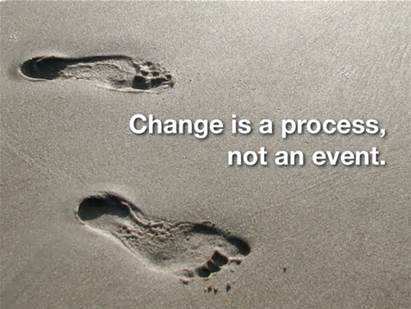Many people use the 5 stages of grief counseling to help people work through change at work.
Some variance of the following stages is a “natural” response to grief:
Denial
Anger
Bargaining
Depression
Acceptance
If you’re using these practices to manage change at work, for most changes you are too late.
Let me say that again: if you are using these practices at work for most changes, you are too late.
It’s likely, you are also using a burning platform approach to change. You create the sense of urgency, set the fire, get people to rapidly jump, and then counsel them through their losses.
This approach works for fires and other real emergencies, but if used in a work environment, it challenges an employee’s basic need to feel safe and secure, limiting their investment and productivity and perpetuating a command/control environment for all.
Applying grief counseling methodology for change management helps staff work through the tragedy, but it doesn’t offer people the opportunity to paint their own success through the change and champion others along through the change. It’s reactive, not proactive and in my opinion as a former grief counselor and now professional change manager, it should be used for the most change adverse people as an exception, not the rule.
How do you get people to choose, not lose?
Here’s the first problem: Most big changes don’t involve end-users until the end. Sponsors are behind the magic curtain (think Wizard of Oz) while project managers gather requirements, build a boat, and then offer the boat to people as a gift. Not surprisingly, the people don’t want the gift, even if it helps them. In these situations, grief counseling is a great option to help them through the pain as you escort them to their new boat.
The second problem: we build fantastic boats, but we don’t know how people plan to use them. We spend a lot of time on the boat and very little time on understanding and preparing the people who will float the boat when we are long gone.
The third problem: we don’t get people to “get” why we are building the boat. They couldn’t easily articulate why we make changes and how it benefits them or the organization.
So, we have a boat.
A new approach: What if you worked with the end users from the beginning, showed them progress, asked them questions, changed the design, responded to their needs, had sponsors and staff celebrate and champion the benefits and you delivered the boat together?
No counseling needed, but people skills are a must.
People are amazingly creative, resourceful, and flexible when they choose change. If asked, they will offer ideas you would never consider
and when you listen, they will help you share messages and build positive momentum around the change.
In my work lately, I hear comments from staff looking forward to a space remodel and sharing creative, cost-effective ideas; groups excited for software upgrades; and people across multiple sites invested in “running from work” (5k) and achieving transformational change, all because we helped them understand the personal and business benefits of the change and reset their expectations. We helped them get involved early and often: the invite for participation always extended.
You won’t need the 5 stages of grief counseling using this approach, but you might need to answer, “What change is next?”
